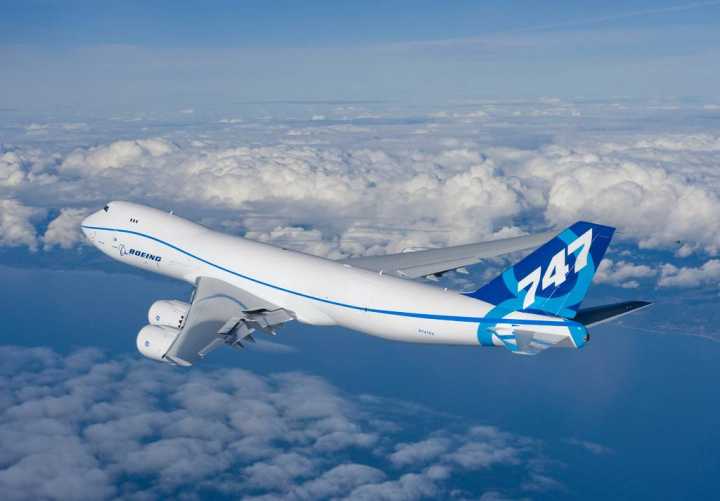It has since been improved in many ways. Wright Brothers,disregarding the fashion which prevails among birds, have placed the tailn front of their apparatus and called it a front rudder, besides placing theperator in horizontal position instead of upright, as I did; and alsoproviding a method of warping the wings to preserve equilibrium. Farmanand Delagrange, under the very able guidance and constructive work ofVoisin brothers, then substituted many details, including a box tail for thedart-lke tail which i used. This may have increased the resistance but itadds to the steadiness. Now the tendency in France seems to be to go backto the monoplaneMonoplane Idea wrongThe advocates of the single supporting surface are probably mistakenIt is true that a single surface shows a greater lift per square foot thansuperposed surfaces for a given speed, but the increased weight due toleverage more than counterbalances this advantage by requiring heavyspars and some guys. I believe that the future aeroplane dynamic flier willconsist of superposed surfaces, and, now that it has been found that bybedding suitably shaped spars in the cloth the head resistance may bemuch diminished, I see few objections to superposing three, four or evenfive surfaces properly trussed, and thus obtaining a compact, handmanageable and comparatively light apparatus. 2][2]Aeronautics

While every craft that navigates the air is an airship, all airships arenot flying machines. The balloon, for instance, is an airship, but it is notwhat is known among aviators as a flying machine. This latter term isproperly used only in referring to heavier-than-air machines which haveno gas-bag lifting devices, and are made to really fly by the application ofengine propulsion.Mechanical birdsAll successful flying machines-and there are a number of them-arebased on bird action The various designers have studied bird flight andsoaring, mastered its technique as devised by Nature, and the modernflying machine is the result. On an exaggerated, enlarged scale themachines which are now navigating the air are nothing more nor less thanmechanical birdsOrigin of the AeroplaneOctave Chanute, of Chicago, may well be called"the developer of theflying machine. Leaving balloons and various forms of gas-bags out ofconsideration, other experimenters, notably Langley and Lilienthal,antedated him in attempting the navigation of the air on aeroplanes, orflying machines, but none of them were wholly successful, and itremained for Chanute to demonstrate the practicability of what was thencalled the gliding machine. This term was adopted because the apparatuswas, as the name implies, simply a gliding machine, being without motorpropulsion, and intended solely to solve the problem of the best form ofconstruction. The biplane, used by Chanute n 1896, is still the basis ofmost successful flying machines, the only radical difference being thatmotors, rudders, etc have been added.Character of Chanute's ExperimentsIt was the privilege of the author of this book to be Mr. Chanute'sHerring and Avery, he was conducting the series of experiments whichhave since made possible the construction of the modem flying machinewhich such successful aviators as the wright brothers and others are nowusing. It was a wild country, much frequented by eagles, hawks, andsimilar birds. The enthusiastic trio, Chanute, Herring and Avery, wouldwatch for hours the evolutions of some big bird in the air, agreeing in thend on the verdict," When we master the prnciple of that bird's soaringwithout wing action, we will have come close to solving the problem ofthe fiving machine
Aeroplanes of various forms were constructed by Mr. Chanute with theassistance of Messrs. Herring and Avery until, at the time of the writersvisit, they had settled upon the biplane, or two-surface machine. Mr.Herring later equipped this with a rudder, and made other additions, butthe general idea is still the basis of the wright Curtiss, and other machinesin which, by the aid of gasolene motors, long flights hate been madeDevelopments by the wrightsIn 1900 the Wright brothers William and Orville who were then inthe bicycle business in Dayton, Ohio, became interested in Chanute'siments and communicated with him The result was that the wrighttook up Chanute's ideas and developed them further, making manyadditions of their own, one of which was the placing of a rudder in front,and the location of the operator horizontally on the machine, thusdiminishing by four-fifths the wind resistance of the man's body. For threeyears the Wrights experimented with the glider before venturing to add amotor, which was not done until they had thoroughly mastered the controlof their movements in the airLimits of the Flying machineIn the opinion of competent experts it is idle to look for a commercialfuture for the fiving machine. There is. and always will be. a limit to itscarrying capacity which will prohibit its employment for passenger orfreight purposes in a wholesale or general way. There are some, of coursewho will argue that because a machine will carry two people another maybe constructed that will carry a dozen, but those who make this contentiondo not understand the theory of weight sustentation in the air, or that thegreater the load the greater must be the lifting power(motors and planesurface), and that there is a limit to these-as will be explained later onbeyond which the aviator cannot go.
